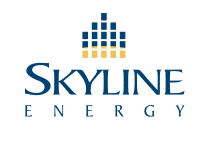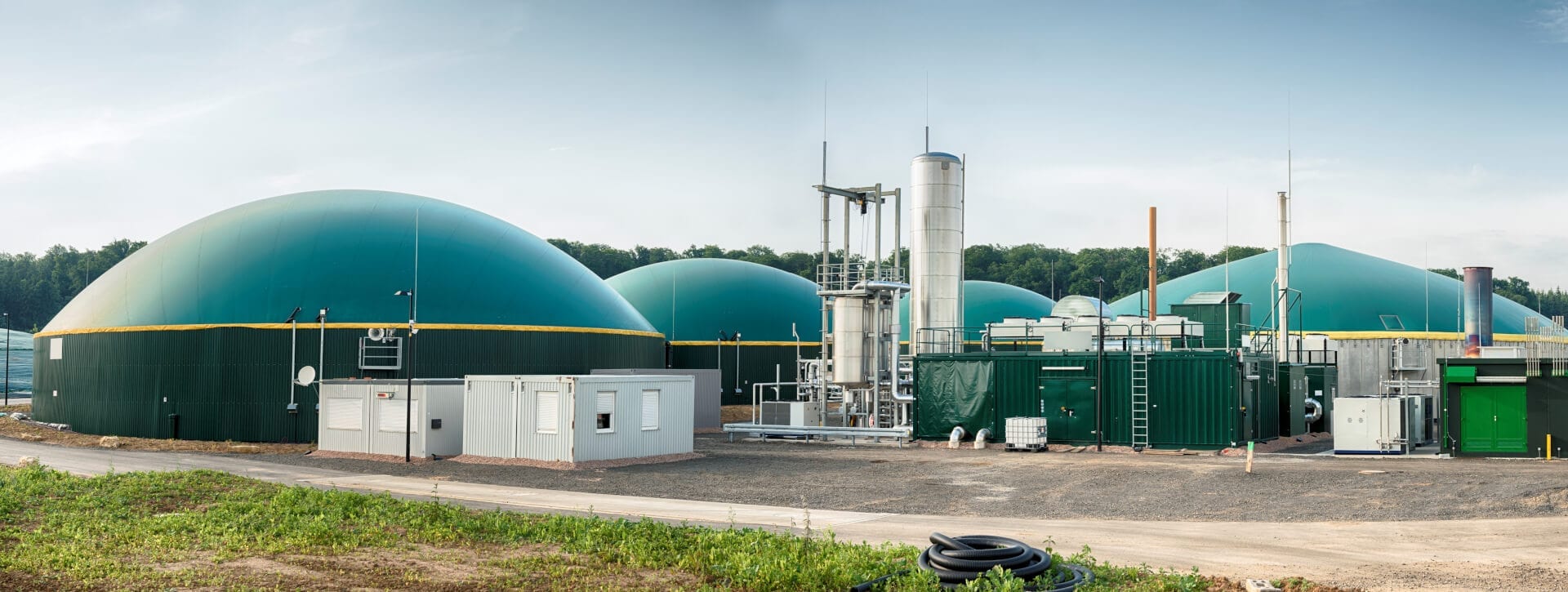
Skyline Energy explains: What happens inside a digester?
January 4, 2021 Insights
Anaerobic digesters are the equipment used to create biogas. They hold and contain organic waste materials in an anaerobic (oxygen-free) environment to allow bacteria to decompose, or “digest,” the waste. This type of decomposition is a natural process that also occurs in climates like swamps and ponds.
Stages of digestion inside an anaerobic digester
- The digester has an inflow of the organic waste material. The insider of the digester is surrounding by a heat element, while mixers work within the digester to further break down the waste.
- The complex compounds in the waste (such as fibre and protein) are broken down by aerobic bacteria into smaller carbohydrates or peptides. They are then broken down further into organic acids.
- Anaerobic bacteria use these acids for energy and produce biogas, which is a mixture of methane, carbon dioxide, and a small amount of other gases. Biogas can then be used as an energy source.
As biogas is produced inside the digester, so is digestate, a high-nutrient compound with a sludge-like consistency, which can be used as compost, fertilizer, soil amendments, or animal bedding.
Skyline Energy is a proud member of the Canadian Biogas Association. We believe that biogas can play a major role in accelerating Canada’s clean energy generation objectives, and we’re excited to see the biogas sector gaining momentum across the country.
1 MW/DC: Megawatt of direct current energy; a unit measurement of the output of power.
2 Expected Annual Generation is projected by an independent third-party and is calculated as an expectation of annual output based on analysis of a number of inputs, including historical production, system efficiency, and historical weather data.
3 MWh: A measurement of energy usage; the amount of energy one would use if keeping a 1,000 kilowatt machine running for an hour.
4 Estimated Gross Annual Revenue is calculated as: (size of system, measured as kilowatts) x (production factor of system, measured as kilowatt hours generated per kilowatt) x (tariff rate, measured as revenue per kilowatt hour generated)
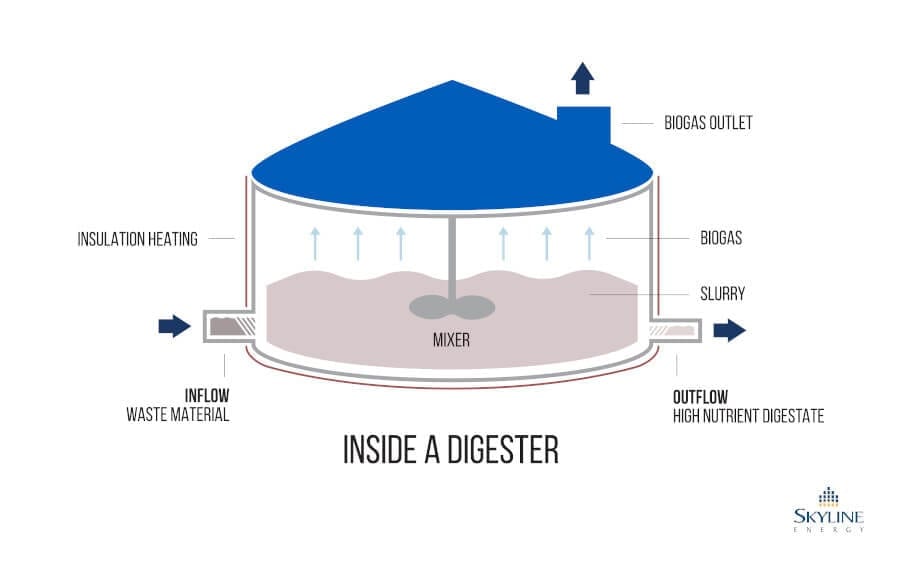
About Skyline Clean Energy Fund
Skyline Clean Energy Fund (“SCEF”) is a privately owned and managed portfolio of medium to large scale clean energy assets, focused on acquiring income-producing assets across Canada, under long-term government contracts.
SCEF is offered as an alternative investment product through Skyline Wealth Management Inc. (“Skyline Wealth Management”), the exclusive Exempt Market Dealer (EMD) for SCEF.
SCEF is committed to surfacing value to its investors through asset monitoring and optimization, while providing a sustainable investment product based in clean, renewable energy.
To learn more about SCEF and its asset manager, Skyline Energy, please visit SkylineEnergy.ca.
To learn about additional alternative investment products offered through Skyline Wealth Management, please visit SkylineWealth.ca.
Skyline Clean Energy Fund is operated and managed by Skyline Group of Companies.
For media inquiries, please contact:
Cindy BeverlyVice President, Marketing & Communications
Skyline Group of Companies
5 Douglas Street, Suite 301
Guelph, Ontario N1H 2S8
cbeverly@skylinegrp.ca
More from this category:
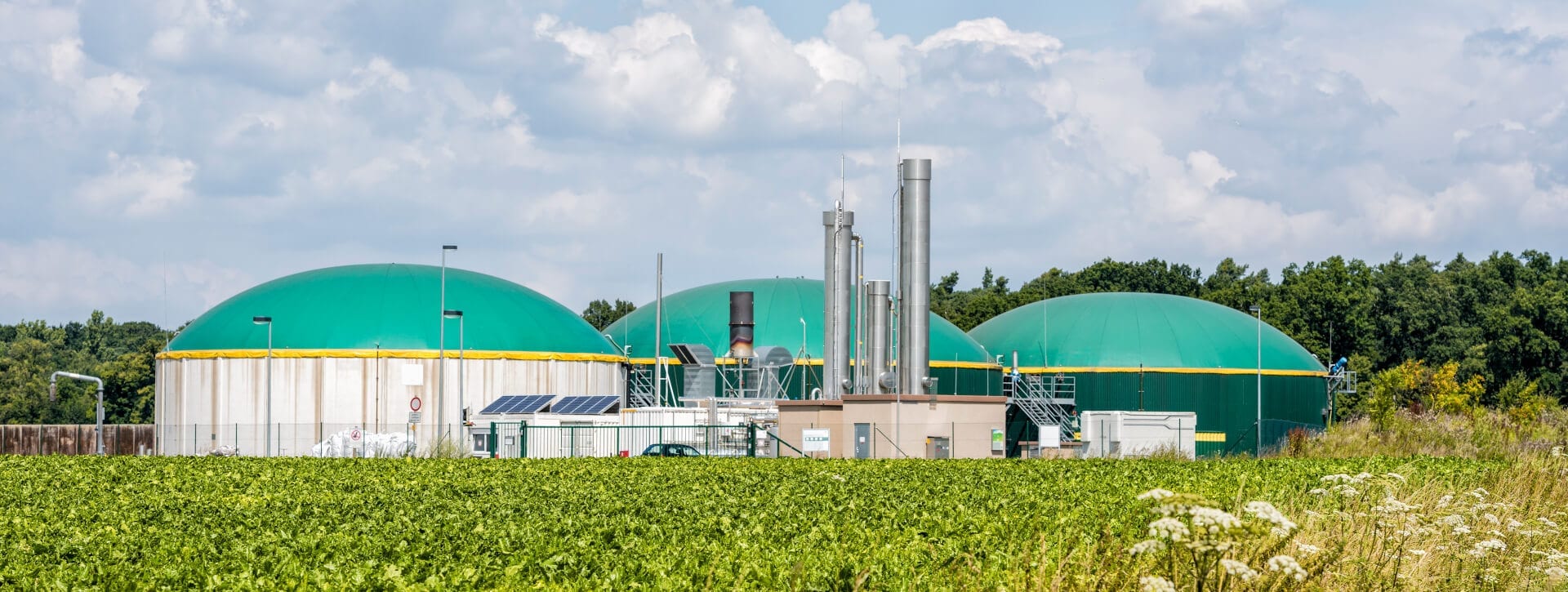
Skyline Energy Explains: Biogas, A Natural & Renewable Type of Energy Generation
Like solar, wind, and hydro, biogas is a natural, renewable, and low-carbon alternative to traditional energy generation.
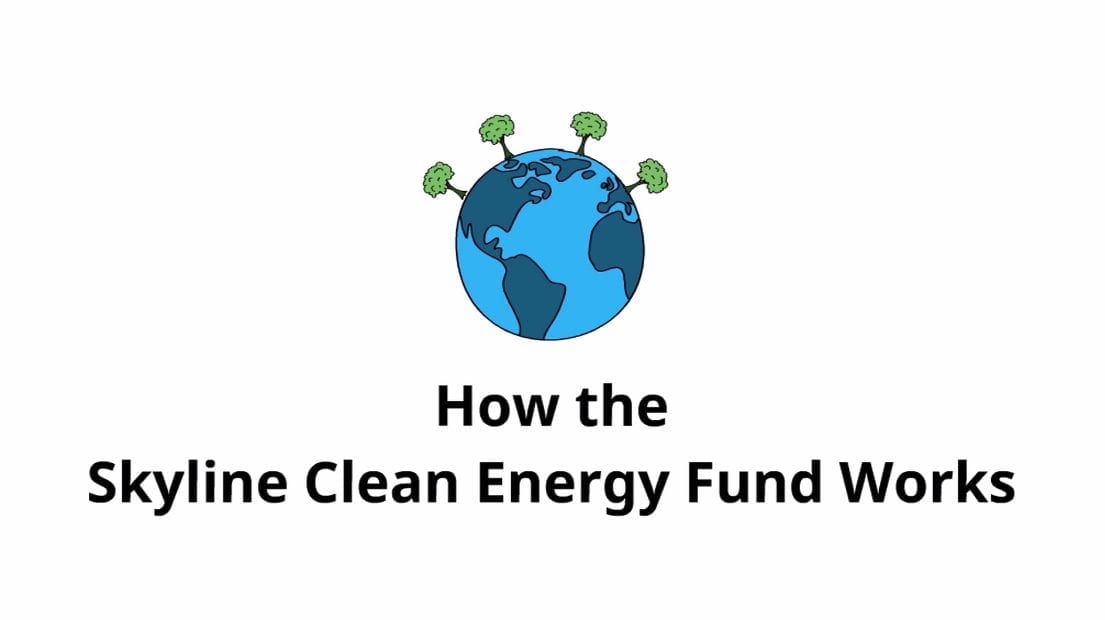
Wondering How The Skyline Clean Energy Fund Works? Watch This Short Video.
Watch this animated video to learn more about: What types of clean energy assets (and their contracts) the Skyline Energy team adds to the SCEF portfolio How the Skyline Energy team maintains the assets How SCEF is positioned to grow amidst the changing clean energy landscape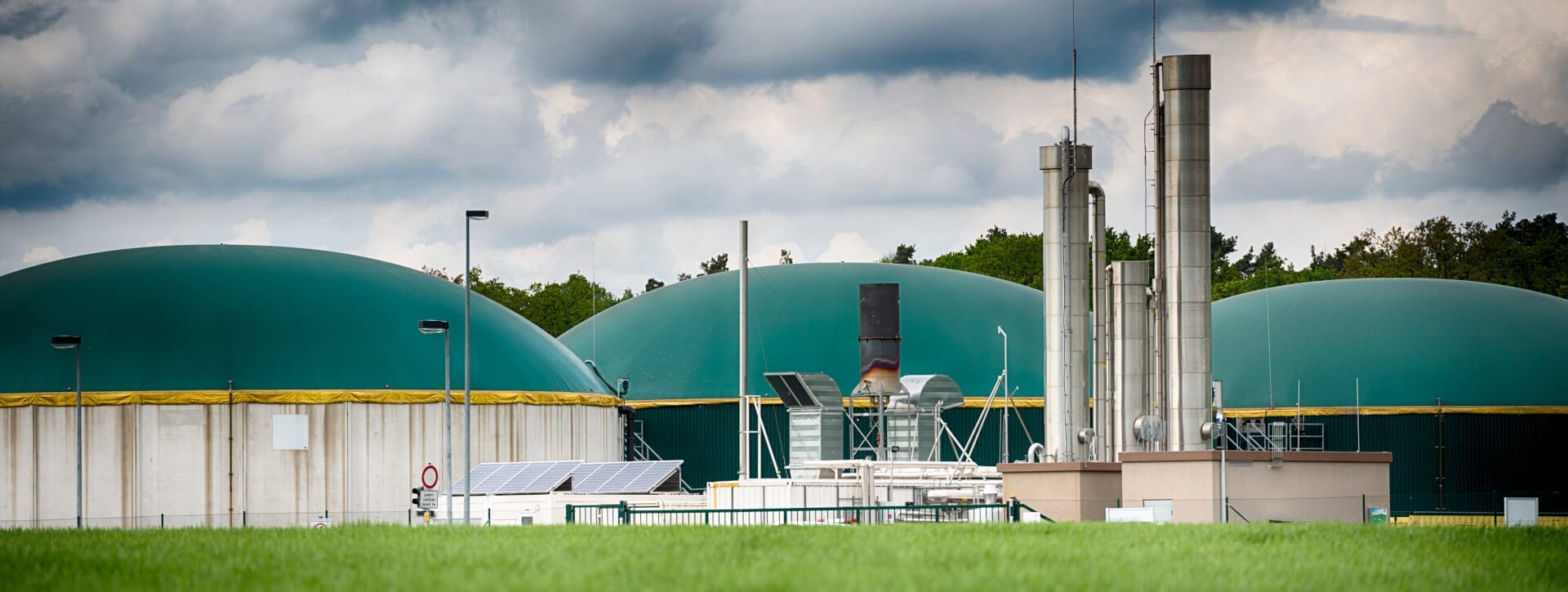
Skyline Energy Explains: What Materials Can Create Biogas?
The Skyline Energy team explains the different types of organic material that can go into a digester to create biogas, and how this ultimately contributes to less dependency on fossil fuels for energy production.
